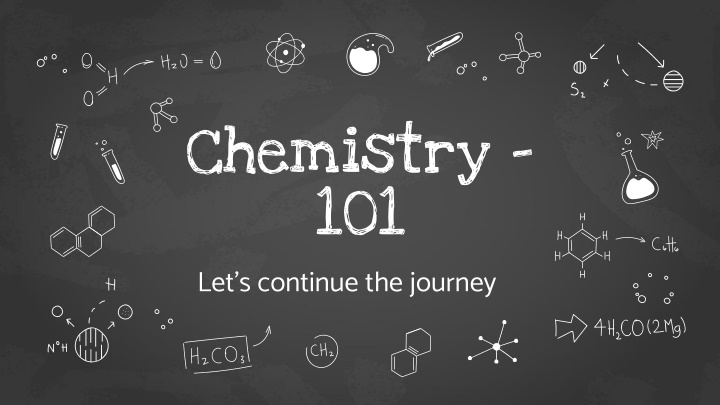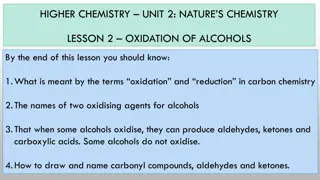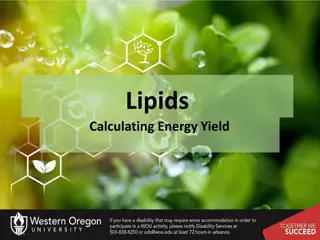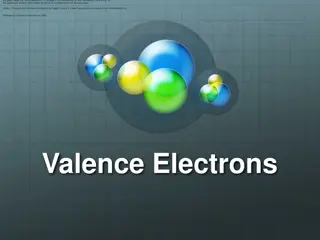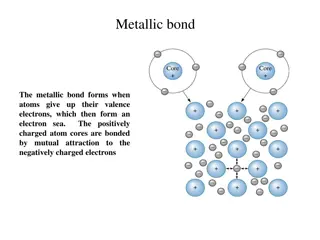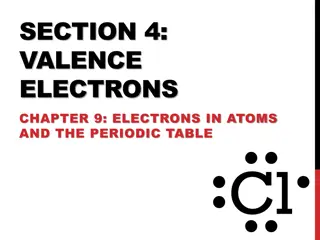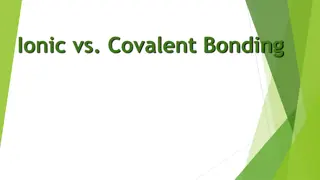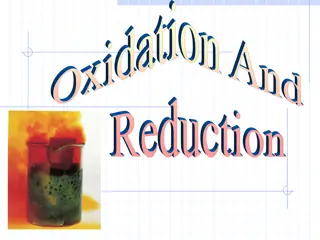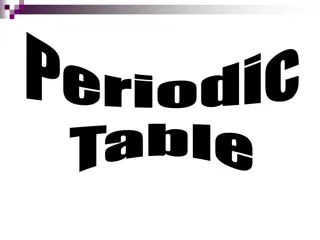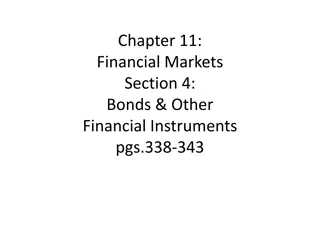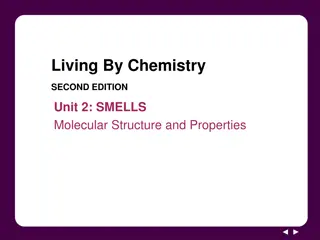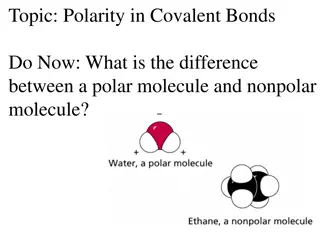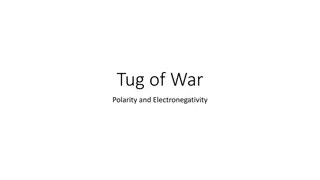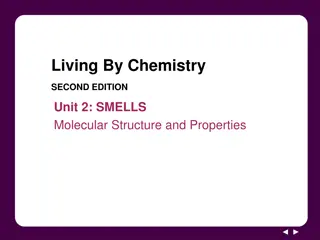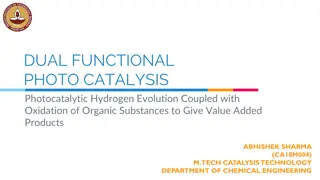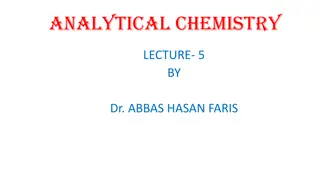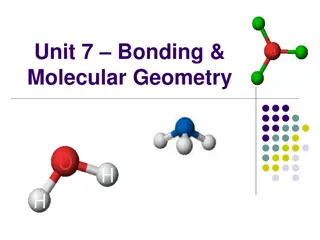Chemical Bonds and Properties: Understanding Polarity, Valence, and Oxidation State
Delve into the world of chemical bonds, from polar covalent bonds to ionic interactions. Understand how bond polarity is influenced by electronegativity differences between atoms, leading to distinct substance properties. Explore the concept of valence, describing an element's bonding capacity, and oxidation state, indicating the electron loss degree in a chemical bond. Witness electronegativity in action, defining atom's ability to attract electrons and influence bond polarization. Discover the transfer of electrons for achieving a noble gas configuration, illustrating atoms' oxidation states in chemical reactions.
Download Presentation

Please find below an Image/Link to download the presentation.
The content on the website is provided AS IS for your information and personal use only. It may not be sold, licensed, or shared on other websites without obtaining consent from the author.If you encounter any issues during the download, it is possible that the publisher has removed the file from their server.
You are allowed to download the files provided on this website for personal or commercial use, subject to the condition that they are used lawfully. All files are the property of their respective owners.
The content on the website is provided AS IS for your information and personal use only. It may not be sold, licensed, or shared on other websites without obtaining consent from the author.
E N D
Presentation Transcript
Chemistry - 101 Let s continue the journey
Polar covalent bond It is an intermediate between covalent and ionic bonds and like for ionic bond it forms between different atoms non-shared electrons or
SO2 molecule with polar covalent bond Electronegativity is a relative ability of atoms to attract electrons while binding to other atoms. It is an ability to polarize a covalent bond
Bonds polarity depends on the difference in electronegativity between two atoms. Bigger differences mean more polarity, with a difference of 2 or more being considered ionic
H : H Cl : Cl H :Cl Na+Cl- Increased bond polarity results in different properties of the substance - hydrogen chloride (polar covalent bond) is a gas at room temperature while sodium chloride(ionic bond between the atoms) is a solid crystalline substance
Valence The valence or valency of an element is a measure of its combining power with other atoms when it forms molecules Or The valence is the number of electron pairs that binds the atom with other atoms
Lets consider 16S 2H + S = H2S 2O + S = SO2 3O + S = SO3 2 unpaired electrons (valence II) 4 unpaired electrons (valence IV)
The oxidation state oxidation state, sometimes referred to as oxidation number describes the degree of oxidation (loss of electrons) of an atom in a chemical bond. oxidation number, The oxidation state, which may be positive, negative or zero, is the hypothetical charge that an atom would have if all bonds to atoms of different elements were 100% ionic, with no covalent component. This is never exactly true for real bonds.
To reach the state of a noble gas, elements transfer their electrons to other elements with stronger electron accepting properties. An atoms oxidation number depends on the other atoms around it. For instance in HCl, chlorine acquires one electron (for an oxidation state of -1) because Cl is more electronegative (~ 3.0) than hydrogen (~2.1). But in the perchlorate ion, ClO4-, chlorine has an oxidation state of +7. All its valence electrons go to oxygen, which is even more electronegative (~3.5) than chlorine.
1) The oxidation state of any free atom is 0 2) The oxidation number of any single atom ion is equal to its charge: H+ (+), Fe3+ (+3), F- (-), Na+ (+); in a polyatomic ion, the oxidation numbers add up to the charge of the ion. 3) Some elements have the same oxidation number in almost all their compounds: H: +1 (except in metal hydrides like NaH, where it s -1) Fluorine: -1 Oxygen: almost always -2 4) In a neutral compound, the oxidation numbers add up to zero 5) If the oxidation number of an atom increases in a chemical reaction it was Oxidized , if it decreases it was Reduced Let s consider H2SO3 (sulfurous acid)
Intermolecular forces (Van der Waals forces) external to the molecule The weakest: London dispersion forces (LDFs) London dispersion forces (LDFs) attractive forces that are created by the movement of electrons, which attract to the positive nucleus of another atom. This leads to temporary dipoles that loosely stick atoms together. LDFs are temporary. LDFs are present in both polar and non-polar molecules. More electrons means stronger LDFs. Dipole Dipole- -Dipole Interactions Dipole Interactions are the attraction forces that occur between two polar molecules. It is the attraction between the positive end of one polar molecule and the negative end of another polar molecule. (e.g. HCl and H2O) The larger the dipole moment (the size of the dipole, which is the distance by which the charges are separated in a molecule) the larger the attractive force. The strongest: Hydrogen bonds Hydrogen bonds (not an actual chemical bond) intermolecular forces between hydrogen (H) and fluorine (F), oxygen (O), or nitrogen (N).
This class uses the materials from the following books: Larry Gonick and Graig Criddle The cartoon guide to chemistry Manyuilov and Rodionov Chemistry for children and adults Kuzmenko, Eremin, Popkov Beginnings of chemistry
